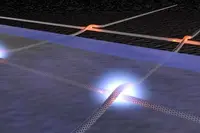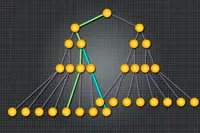Electronics News
Archive : 24 April 2015 год
 Freescale, soon to be part of NXP as a consequence of the deal announced in March 2015, continues its slow recovery from its previously troubled financial position.
Freescale, soon to be part of NXP as a consequence of the deal announced in March 2015, continues its slow recovery from its previously troubled financial position.
In its latest statement, the company says it grew Q1 sales to $1.17billion, a 6% increase over the same quarter in 2014.
"First quarter results marked another quarter of solid execution for Freescale," claimed Gregg Lowe, pictured, president and CEO. "Revenue and earnings per share both showed strong sequential and year over year improvement. In addition, the increase in gross margin represents the ninth consecutive quarter of growth in margins and the third quarter in a row of record gross margins."
In terms of product group performance, MCU sales for Q1 2015 reached
$235million, compared to $223m in Q1 2014. Sales of 32bit devices into distribution and higher sales of applications processors into the automotive market contributed to the performance. Meanwhile, sales of automotive MCUs were said to be $307m, some 10% up on Q1 2014.
Digital networking sales declined significantly, but analogue and sensors generated $207m. RF sales were $184m.
Author
Graham Pitcher
Source: www.newelectronics.co.uk
 While silicon based transistors have been the foundation of modern electronics, carbon nanotube wires show promise in replacing silicon because the technology can operate ten times as fast and is more flexible. However, the approach has some problems caused by gaps at the junctions between the nanotubes. Now researchers at the University of Illinois believe they may have developed a way of mitigating the problem.
While silicon based transistors have been the foundation of modern electronics, carbon nanotube wires show promise in replacing silicon because the technology can operate ten times as fast and is more flexible. However, the approach has some problems caused by gaps at the junctions between the nanotubes. Now researchers at the University of Illinois believe they may have developed a way of mitigating the problem.
"The connection between the nanotubes is highly resistive and results in slowing the operation of the transistor," Professor Joseph Lyding said. "When electrons go past that junction, they dissipate a lot of energy."
The resistance results in heat pooling at the junctions between the tubes, providing researchers with the opportunity to 'solder' the connections. The researchers use this heat to deposit metal across the junctions. The deposited metal reduces the junction resistance, effectively stopping the energy loss.
In 2013, Prof Lyding and researcher Jae Won Do used a vacuum chamber to apply a gaseous chemical to metallise the junctions. However, in a new technique, the team is applying a thin layer of a solution made from compounds that contain the metal needed to solder the junctions.
"Our new technique is much simpler," said Do. "It involves fewer steps and is more compatible to existing technology. We're getting similar improvements to what we got from the gaseous method, only now we can experiment with the capabilities of other materials that aren't gases, which will let us improve the transistors' performance even more."
Prof Lyding added: "With this method, you just send current through the nanotubes and that heats the junctions. From there, chemistry occurs inside that layer and we're done. You just have to rinse it off."
The team is now looking at junction compounds that might help to amplify the current even more.
Author
Graham Pitcher
Source: www.newelectronics.co.uk
 Researchers from MIT have designed a reconfigurable chip that is said to defend cloud based applications against memory access attacks. The concept is that, whenever a chip needs to fetch data from a particular memory address, it should also query a number of other addresses so an observer can't determine which one is of interest.
Researchers from MIT have designed a reconfigurable chip that is said to defend cloud based applications against memory access attacks. The concept is that, whenever a chip needs to fetch data from a particular memory address, it should also query a number of other addresses so an observer can't determine which one is of interest.
Researchers from MIT have designed a reconfigurable chip that is said to defend cloud based applications against memory access attacks. The concept is that, whenever a chip needs to fetch data from a particular memory address, it should also query a number of other addresses so an observer can't determine which one is of interest.
To minimise the amount of extra data needed, the researchers store memory addresses in a 'tree'. Every address is randomly assigned to a path through the tree and when the chip requires data stored at a particular address, it also requests data from all other nodes on the same path.
When the chip writes a block of data to memory, it pushes it as far down the tree as it can, which means finding the last vacancy before the block's assigned path branches off from path that was just read.
In writing data, the chip has to follow the sequence of nodes in the path to conceal information. Previously, that meant sorting memory addresses according to their ultimate locations in the tree.
"Sort is not easy to do in hardware," says graduate student Chris Fletcher. "By the time you've sorted everything, you've taken a real performance hit."
To overcome this problem, the team has used an extra memory circuit, with storage slots that can be mapped onto the sequence of nodes in any path through the tree. Once a data block's final location is determined, it's stored at the corresponding slot in the circuit. All of the blocks are then read out in order.
Rather than writing data every time it reads data, the chip writes only on every fifth read. On the other reads, it discards the decoy data. When it does write data, it will have, on average, five extra blocks of data to store on the last path it read. There are generally enough vacancies in the tree to accommodate the extra blocks, but the system's protocols for pushing data as far down the tree as possible can handle the occasional logjam.
According to the team, one of the advantages of its approach is that it can be added to existing chip designs, without much retooling. The extra layer of security can then be switched on and off as needed.
Pic: A memory access protocol assigns every memory address to a single path (green) through a data tree. But a given node of the tree will often lie along multiple paths (blue).
Author
Graham Pitcher
Source: www.newelectronics.co.uk
 Intel has launched the Compute Stick, a palm sized computer featuring a quad core Atom processor. The device is available now to support Windows 8.1, while a version which supports Ubuntu 14.04 LTS is expected shortly.
Intel has launched the Compute Stick, a palm sized computer featuring a quad core Atom processor. The device is available now to support Windows 8.1, while a version which supports Ubuntu 14.04 LTS is expected shortly.
The Windows version includes 2Gbyte of memory, 32Gbyte of on board storage and McAfee Antivirus Plus. The Ubuntu version will have 1Gbyte of memory and 8Gbyte of storage. Both devices support Wi-Fi and Bluetooth, with a USB port to connect peripherals and a micro SD card slot for additional storage. Both versions also support high definition graphics and audio.
Amongst the applications envisaged by Intel are transforming a TV or monitor into a computer and digital signage.
Author
Graham Pitcher
Source: www.newelectronics.co.uk

